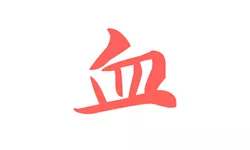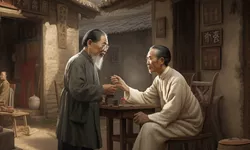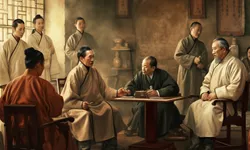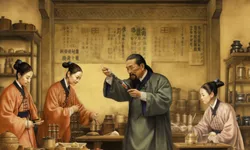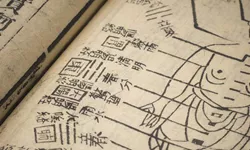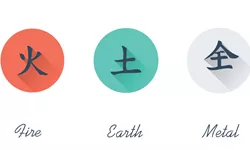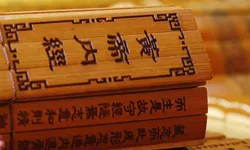According to Chinese Medicine meridians are the pathways through which Qi, Blood, and the various body fluids flow. Meridianology is the foundation for many Chinese Medicine concepts and practices such as acupuncture or Gua Sha.
The meridian network includes meridians (jing - 經) and "collaterals" (luo - 絡). Meridians are the pathways that run vertically through the body. Collaterals branch out horizontally from the meridians to further connect and network the body. Together they make up an exhaustive network that connects everything in the body.
It's important to understand that meridians are neither blood vessels nor are they reflective of the nervous system. In fact they do not have a true anatomical equivalent. They were developed throughout millennia of external observation of the human body by Chinese Medicine theorists. One key source of development of the meridian system was the observation of the effects of acupuncture points: if inserting an needle in a specific point in the body resulted in feelings or sensations elsewhere, the conclusion was that those two locations were connected. Another source was the repeated observations that issues in the body often tend to affect several locations at once. For instance Liver issues often result in discoloration of the eyes. Or issues with the Kidneys often get reflected in the ears or genital organs. It is through those millennia of careful observations of the relationships between various parts of the human body that the meridian system was devised.
The main meridians
There are fifty-nine meridians in the body. However only twenty are generally considered important because they gather most of the nearly four-hundred acupuncture points in the human body. Those twenty meridians are known as the "Twelve Standard Meridians" and the "Eight Extraordinary Meridians".
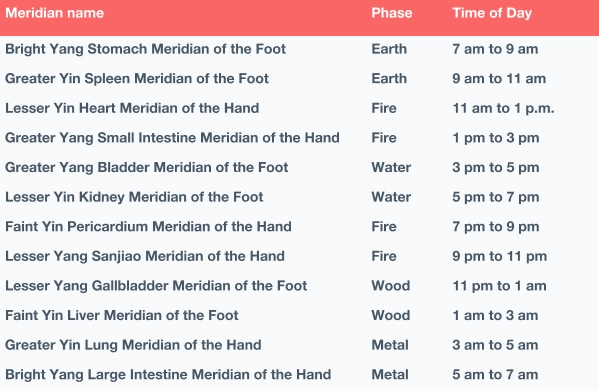
A list of the Twelve Standard Meridians
The twelve standard meridians are divided into six Yin meridians and six Yang meridians. They each go through two Zang-Fu organs: the Yin or Yang organ they're named after and its respectively Yang or Yin counterpart under Zang-Fu theory. For instance the "Greater Yin Lung Meridian of the Hand" will go through both the Lungs (a Yin organ) and the Large Intestine (its Yang counterpart under Zang-Fu theory). Similarly, the "Bright Yang Large Intestine Meridian of the Hand" will also go through the same Zang-Fu pair: the Large Intestine and the Lungs. Each meridian is also assigned a phase under the five-phases theory. Quite logically, they share the same phase as the Zang-Fu organ pair they pass through. As such, the "Greater Yin Lung Meridian of the Hand" and the "Bright Yang Large Intestine Meridian of the Hand" both share the Metal phase.
Each of the twelve standard meridian is either connected to a hand or a foot. The three Yin meridians of the hand originate in either one of their two Zang-Fu organs and end in the hand. The three Yang meridians of the hand originate in the hand, go through their two organs and end in the head. The three Yang meridians of the foot originate in the head, go through their two organs and end in the foot. Lastly, the three Yin meridians of the foot start in the foot and end in either one of their two Zang-Fu organs.
In the meridians, Qi and Blood follow a specific schedule where they're at maximum level in a specific meridian depending on the time of the day. For instance between 7am and 9am Qi and Blood will be at maximum level in the "Bright Yang Stomach Meridian of the Foot" before being at maximum level in the "Greater Yin Spleen Meridian of the Foot" between 9am and 11am.
Unlike the twelve standard meridians, the eight extraordinary meridians are not connected to Zang-Fu organs. Instead their role is connect the twelve standard meridians together and act as Qi or Blood storage units. Only two of them have acupuncture points on them: the Governing Vessel and the Conception Vessel. The Governing Vessel is referred to in Chinese Medicine literature as the "sea of the Yang meridians" because it is connected to all the Yang meridians and is tasked with regulating their Qi. The Conception Vessel is the "sea of the Yin meridians" and, you'll have guessed, connects to and regulates the Qi of all the Yin meridians.
The roles of meridians
Meridians have three main roles according to Traditional Chinese Medicine:
- A coordinating and stimulation role: under Chinese Medicine theory the human body has many parts (Zang-Fu organs, orifices, limbs, skin, bones, etc.) and the meridian system is the how all these different moving parts coordinate and communicate with each others. Similarly when a part of the human body is stimulated, this stimulus gets communicated along the meridians into the relevant organs in the body and causes physiological or pathological changes. These changes are then reflected on the body surface through the meridians. The reason why acupuncture works is because of this stimulation role.
- Transporting Qi, Blood and body fluids: Blood is the material basis of human life activities and must be transported through the meridians to maintain the normal physiological functions of the body.
- A defensive role: meridians play a crucial role in spreading "Defensive Qi" in parts of the body prone to pathological or "evil" invasions.
Sources:
Ted J. Kaptchuk (1983). The Web That Has No Weaver: Understanding Chinese Medicine. Chicago, Il., U.S.A.: Congdon & Weed.
Ko, Robert. Health Concepts in Chinese Medicine [PDF documents and videos]. Retrieved from The Hong Kong University of Science and Technology on Coursera: https://www.coursera.org/learn/health-concepts-chinese-medicine
Meridian (Chinese medicine). (n.d.). In Wikipedia. Retrieved April 25, 2018, from https://en.wikipedia.org/wiki/Meridian_(Chinese_medicine)
经络. (n.d.). In A+医学百科. Retrieved April 25, 2018, fromhttp://www.a-hospital.com/w/%E7%BB%8F%E7%BB%9C
经络 (科普知识). (n.d.). In Baidu Baike. Retrieved April 25, 2018, from https://baike.baidu.com/item/%E7%BB%8F%E7%BB%9C/1110983
Article tags: Chinese Medicine theory

